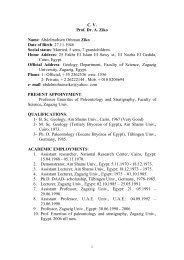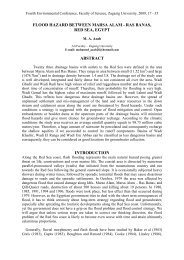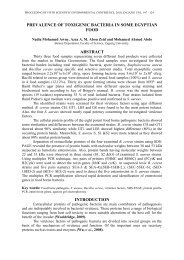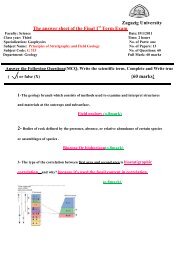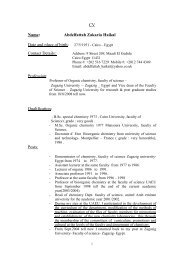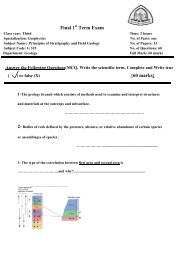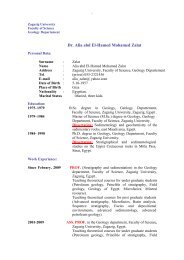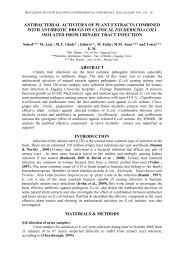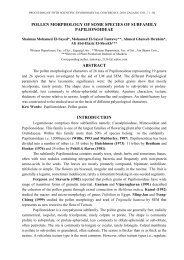GEOPHYSICS LETTERS
GEOPHYSICS LETTERS
GEOPHYSICS LETTERS
- No tags were found...
Create successful ePaper yourself
Turn your PDF publications into a flip-book with our unique Google optimized e-Paper software.
A beer Abd EI-Rehim El-Kenawy 7sources are derived from the characteristic properties of the amplitudespectrum. Several authors have proposed the spectral analysis techniquesfor tne analysis of the potential field data. Fourier spectral analysis hasbeen developed by Troshkov and Shalaev (1961), Spector (1968),Spector and Grant (1970), Treitel et al (1971), Cassano and Rocca(1975), Hahan et al (1976), Sadek et al (1984) and Mnniruzzamanand Banks (1989).According to Spector (1971), the depth (Z) of the anomaly sourcesare given from the slope of the straight line interpolating the diagram oflog normalized amplitude spectrum versus the spatial frequency usingthe following relationZ = - slope (1)Where: Slope = log A (w) I w and w = 211:for = the wave number atfrequency (t) where (t) is the general term for the frequency at any point.The results of Spector technique for the ten profiles are shown intable No. (1) while Figure (12-b) shows the spectral analysis for profileNo. (3).c) Enler deconvolntionEuler deconvolution is both a boundary fmder and a depthestimator. It is commonly used as a first step in the interpretation ofmagnetic or gravity data. The most important products are thedelineation of trends such as basement faults and estimates of theirdepths. The method can be expected to provide useful information aboutfaults and steeply dipping contacts and basin edges.The use of this method has become more widespread because it hasbeen automated and rapid interpretation that work with either grid orprofile data (Klingele et aL, 1991; Marason and Klingele, 1993;Harris et aI., 1996; Stavrev, 1997 and Barbosa et ai, 1999). It isnormally applied to grided data, where the data-sampling interval isuniform. It passes a moving window through the data, and uses leastsquaresinversion to obtain the depth and horizontal location of sourceswith different structural indices.



